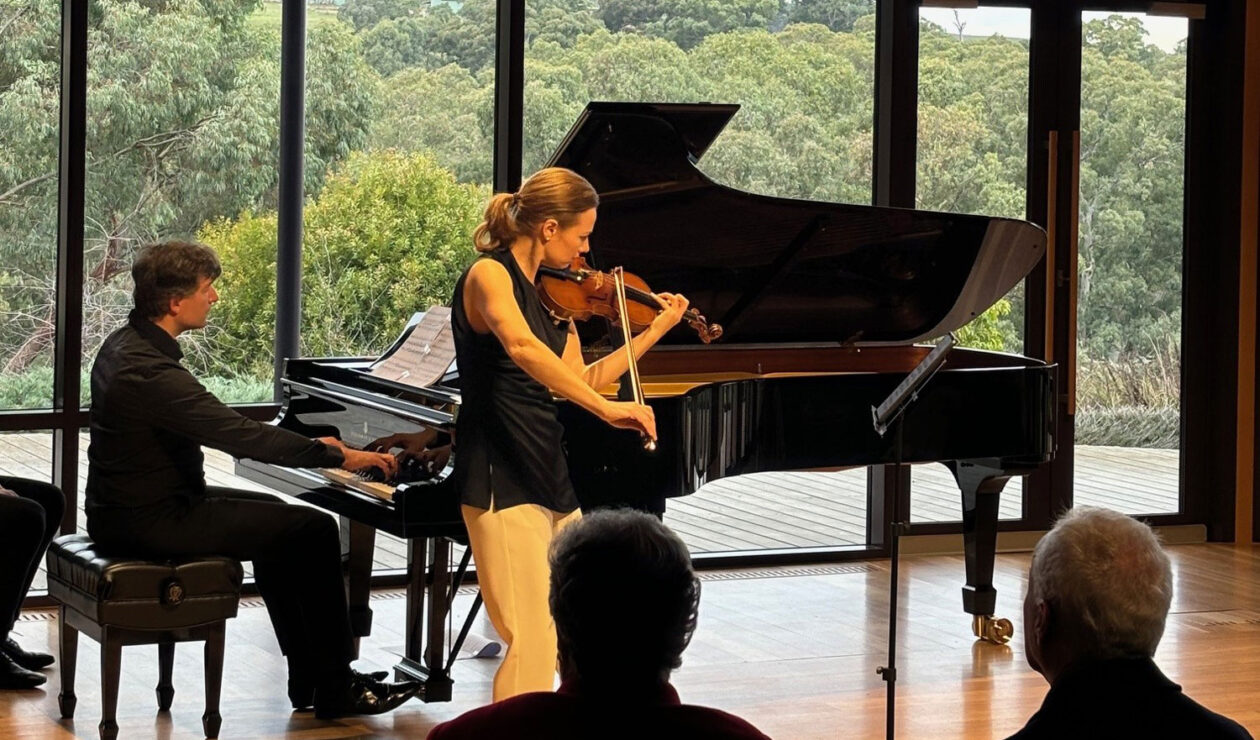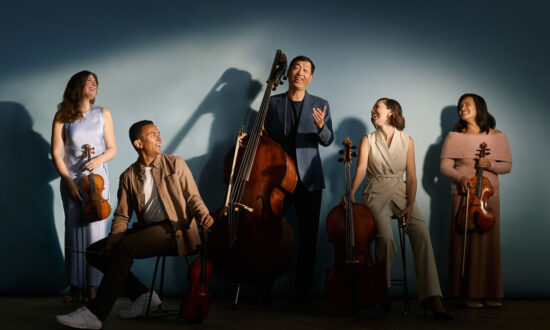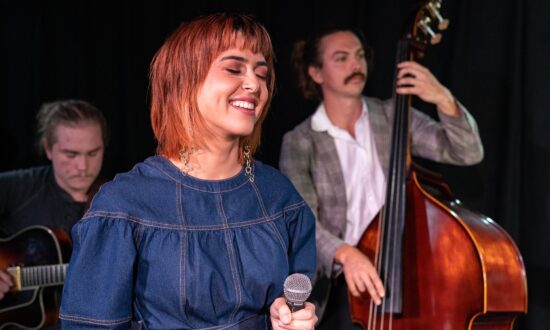Satu Vänskä and Konstantin Shamray’s From Siberia to Sibelius was a concert of contrasts.
Firstly, this was evident in its two halves: Slavic composers in the first, and Finnish in the second – duly acknowledging the two musicians’ homelands – with Beethoven’s “Champagne Sonata” thrown in at the end as a crowd-pleasing finale.
But the most striking contrasts were to be found in the performances themselves. Even with an intimate knowledge of the repertoire, seeing Vänskä and Shamray collaborate in real time was continually fresh and invigorating.
It started with musical leadership. Shamray took the lead in the first half, beginning with a solo performance of an unannounced piece by Ukrainian composer Valentin Silvestrov. The piece begins with a brittle, fragmentary collection of dissonances, which Shamray brought out with impeccable tone, thanks to his delicate and highly nuanced use of the sustain pedal.
As the Silvestrov piece developed – and eventually climaxed – in the murky depths of the piano, with occasional suggestions of resolution, the tone was set perfectly for the centrepiece of the first set. This was a performance of 19 of Shostakovich’s 24 Preludes, Op. 34, transcribed for violin and piano by Dmitri Tsyganov (with the wholehearted approval of the composer, as Shamray explained beforehand).
Composers have been writing sets of preludes for piano in all 24 major and minor keys for several centuries now, and one can often hear the weight of history in this well-worn format. However, Shostakovich’s set is uniquely irreverent, each one starting with a dutiful nod to the key centre with a total departure into uncharted territory mere seconds later. Shamray and Vänskä were sincere with each of these harmonic excursions, finely balancing the broad, vocal character of each melody with the nuance of the shifting chords underneath.
Although Tsyganov’s transcription gives the lion’s share of the melodic material to the violin, the piano never takes on the role of accompanist; Shamray and Vänskä were wonderfully aware of the symbiosis required for a successful realisation of the work. Vänskä played with a striking brightness of tone that felt like an extension of the brilliance of Shamray’s right hand, especially against the much darker resonances of his left hand.
In the midst of the preludes, the unthinkable happened – one of the strings broke on Vänskä’s c. 1728 Stradivarius, on loan from the Australian Chamber Orchestra’s instrument fund. The performance had to be halted temporarily while she left to replace it, and Shamray played an impromptu selection of shorter works by Prokofiev. Returning to the stage moments later, the duo immediately continued with consummate professionalism.
The first set concluded with another solo performance from Shamray, of Chopin’s Fourth Scherzo, recited with concert-sized aplomb.
Vänskä then took the lead in the second set, beginning with Finnish composer Aulis Sallinen’s Cadenza for Violin Solo, Op. 13, displaying her remarkable virtuosity and command of her instrument. Following this, Shamray joined her for a wonderfully diverse selection of shorter pieces. In keeping with the program’s title, Sibelius predominated, with highlights being his later composition “Auf Der Heide” (“On the Heath”, from his Four Pieces for Violin and Piano, Op. 115), and the wonderfully delicate “Berceuse” (from his Six Pieces for Violin and Piano, Op. 79). “Dance charactéristique” and “Tanz-Idylle” (also from Op. 79) were also memorable, delivered with grit and fiery rhythm.
Even as the frankness with which Vänskä and Shamray delivered these pieces felt right given their folkloric undertones, the obvious virtuosity of both performers was never in doubt.
However, the consistent emphasis on technical brilliance was tempered by an extremely well-timed surprise. Taking to a microphone, Vänskä held her violin to the side and sang a traditional song, “Tuoll’ on Mun Kultani” (“Yonder My Sweetheart”), taken from Finland’s national literature epic, the Kalevala.
To include an honest-to-goodness folk song was a bold decision, but it felt entirely apt. Vänskä’s vocal was exquisitely clear and bright, Shamray’s accompaniment was appropriately mellow and restrained, and the duo transformed the song’s bare simplicity into captivating sincerity. Although unconventional, the juxtaposition of academic refinement and folkloric straightforwardness sounded wholly natural.

Get InReview in your inbox – free each Saturday. Local arts and culture – covered.
Thanks for signing up to the InReview newsletter.
Likewise, the inclusion of Beethoven’s “Champagne Sonata” (Op. 30, No. 3) as the final piece of the program could not have made more sense. Even in the more intellectually dense first movement, the baroque dance forms which underpin the classical sonata were the foundation of the duo’s effervescent rendition.
With this, as with each of this concert’s many contrasts, Vänskä and Shamray made it abundantly clear that they are musicians of the highest calibre. Despite their musical voices often being strikingly different, their unity as a duo was undeniably entrancing.
Satu Vänskä and Konstantin Shamray: from Siberia to Sibelius was performed at UKARIA Cultural Centre on July 7.
Edmund Black is the 5th recipient of the Helpmann Academy InReview Mentorship. He is working with Graham Strahle to write a series of articles for publication in InReview.
Support local arts journalism
Your support will help us continue the important work of InReview in publishing free professional journalism that celebrates, interrogates and amplifies arts and culture in South Australia.
Donate Here




